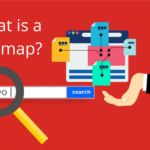Your headline is an advertisement for your content in marketing and advertising. A compelling headline can attract and engage readers while sending signals to search engines that help in content ranking.
According to Wired, a great headline can spike your traffic by 500%.
The average person has an attention span of 8 seconds; therefore, you must engage your readers from the moment they start reading your content. With 59% of people sharing content without reading it first, you need to make sure your headlines attract people.
After all, great content always starts with a headline that grabs your reader’s attention.
Here are 7 easy tips for writing engaging headlines.
1. Include Numbers in Your Headline
Numbered headlines tend to generate more social shares and engagement. You can use a low number to show how succinct your article is, or a high number to show how thorough it is. This gives your headline more specificity and draws the reader in.
Furthermore, it is critical to understand the science of odd numbers in particular. Odd numbers outperform even numbers in most cases. The brain seems to believe odd numbers more than even numbers, according to the Content Marketing Institute. Odd numbers make it easier to consume and remember information.
Instead of spelling out the number, make sure you use a numerical. In headlines, numbers stand out better and take up less space.
2. Make Use of a Unique Rationale
This is a fancy way of saying that you should give your reader a cause to read your article. This could mean “ideas,” “strategies,” or anything else that helps your reader learn something new.
The following are some examples of rationales that you can use in your headlines:
- Tips
- Reasons
- Lessons
- Tricks
- Ideas
- Ways
- Principles
- Facts
- Secrets
- Strategies
3. Add the Keyword in Your Headline
Every headline you write should target a particular keyword with significant search volume.
To make sure your headline benefits readers and search engines, include a valuable target keyword that readers frequently search for in your headline to increase the SEO value of your content.
Use the target keyword towards the beginning of your headline to optimize it for SEO.
Importance of H1 Tag
The H1 tag on your page functions as a ‘second title tag’ and can serve as a relevancy signal to Google.
By including the target keyword in the page title and H1 tag of your blog, you provide Google with more information about the page’s content, which can help it rank higher for more search queries.
4. Keep Your Headline Under 60 Characters
Keep in mind that Google limits title length to 60 characters in search results. If your headline is over 60 characters, it will be truncated to some extent.
Let’s talk about meta descriptions while we’re on the subject of headlines. Meta descriptions are crucial for increasing your organic search visibility and getting more targeted website traffic.
For the best results, create a meta description that is less than 155 characters. This will give you the best-looking description that will not be chopped off across all devices.
5. Stay Away From Positive Superlatives
According to a study conducted by Outbrain, headlines with negative superlatives (“never” or “worst,” for example) performed 63 percent better than those with positive superlatives (“always” or “best”).
In fact, headlines that used positive superlatives performed 29% worse than those without any superlatives. One reason is that superlatives (such as best, fastest, and cheapest) have become overused in marketing, causing them to be ignored.
6. Leverage the 5 W (and 1 H) Questions
Write a title that answers one of the five W (and one H) questions to clearly show your readers what they will get from the blog post or landing page. Write headlines that include the words “what,” “who,” “when,” “where,” “why,” and “how.”
These are trigger words. Typically, you’ll use either a trigger word or a number in your headline.
These words are easy to relate to, and they tend to directly answer questions that your reader was already searching for.
7. Use Emotional Adjectives
You can use emotional adjectives to describe your reader’s problem. The most important thing you can do for your reader is to solve a problem for them, and you may do it right in your headline.
Here are a few examples of emotional words that you can use in your headlines:
- Effortless
- Amazing
- Eye-opening
- Spectacular
- Fun
- Free
- Stunning
- Surprising
- Incredible
- Essential
- Absolute
- Strange
Additional Tip
Optimize Your Title for Social Sharing
According to HubSpot, headlines with a length of 8–12 words received the most Twitter shares.






